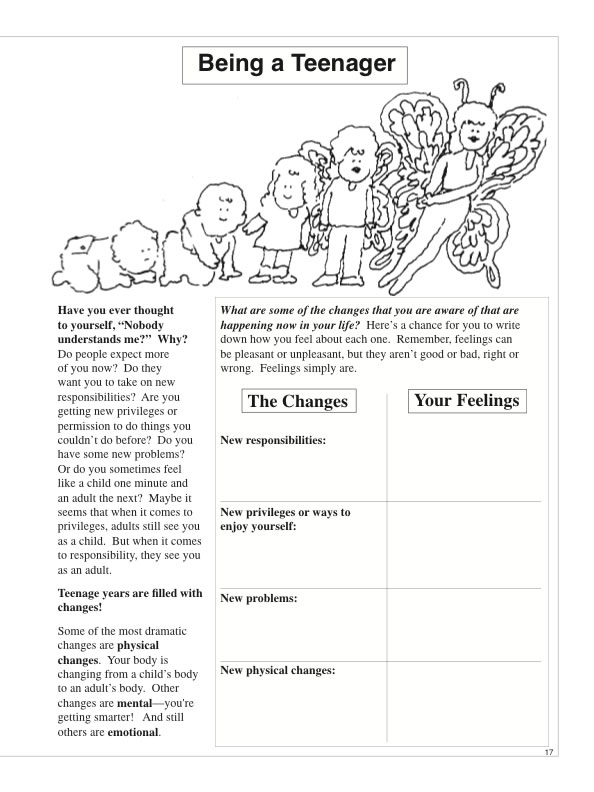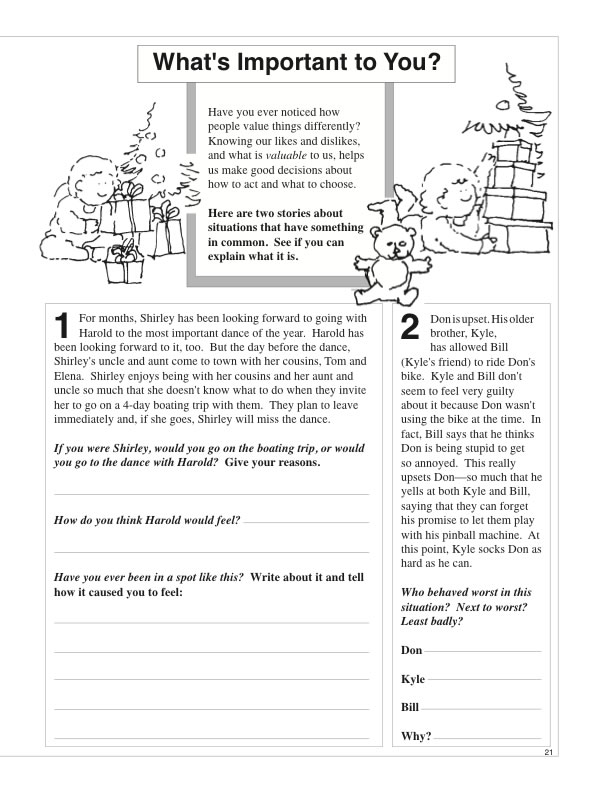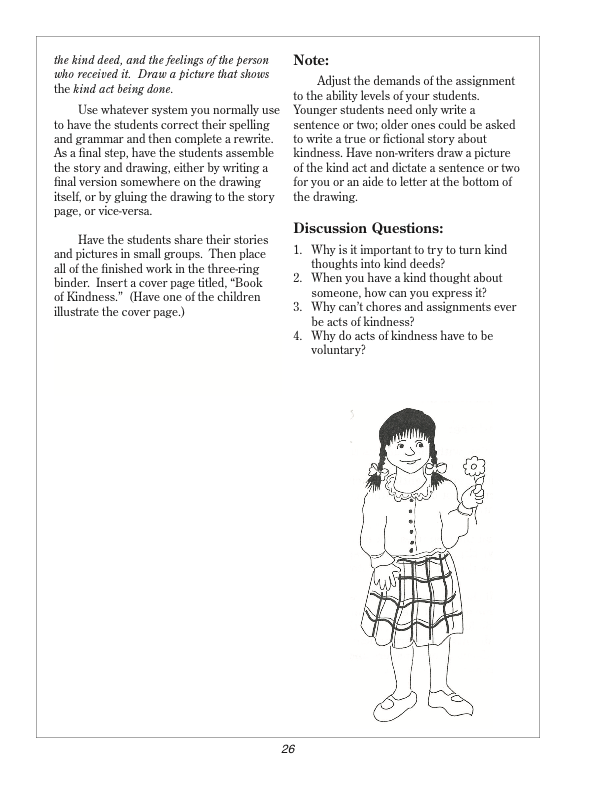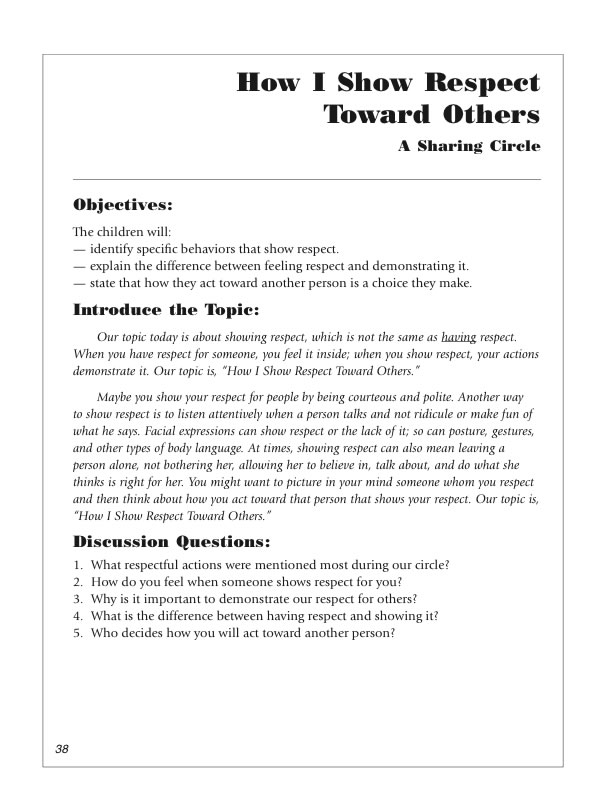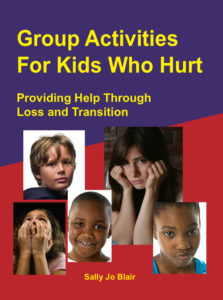
Students are often confronted with situations in their lives that produce hurt, anger, fear, grief, anxiety, and confusion.
Here Is A Great Resource for You
Here’s an activity that is an effective group counseling session as well as a solid classroom experience designed to harness the power of eclectic grouping by bringing students together, not only to be heard, but also to provide a support system for each other in the midst of their own hurting and healing. It is based on the premise that acknowledging hurt is one critical step in the process of healing. Developing compassion, forgiveness and moving beyond pain are other critical steps that can be facilitated in the context of group dynamics.
In this activity we are helping the students discover the power of thought and how it can help in their healing process.
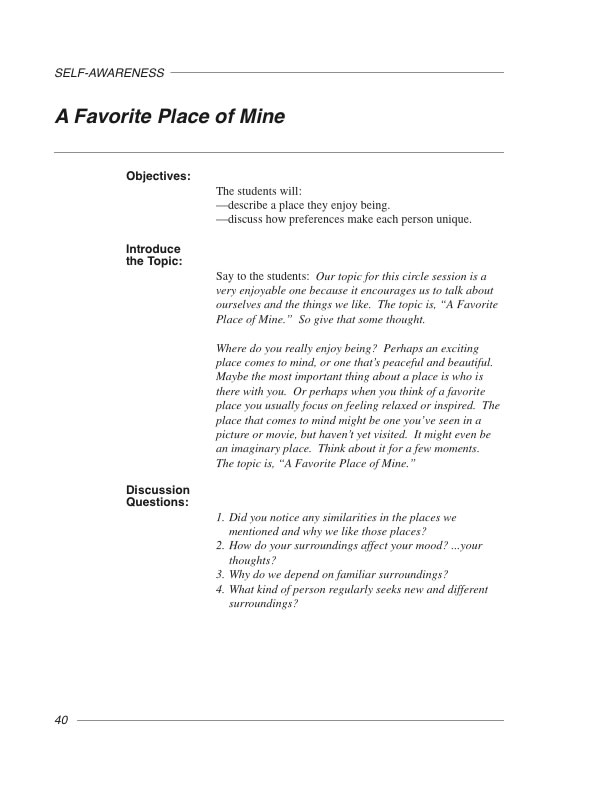
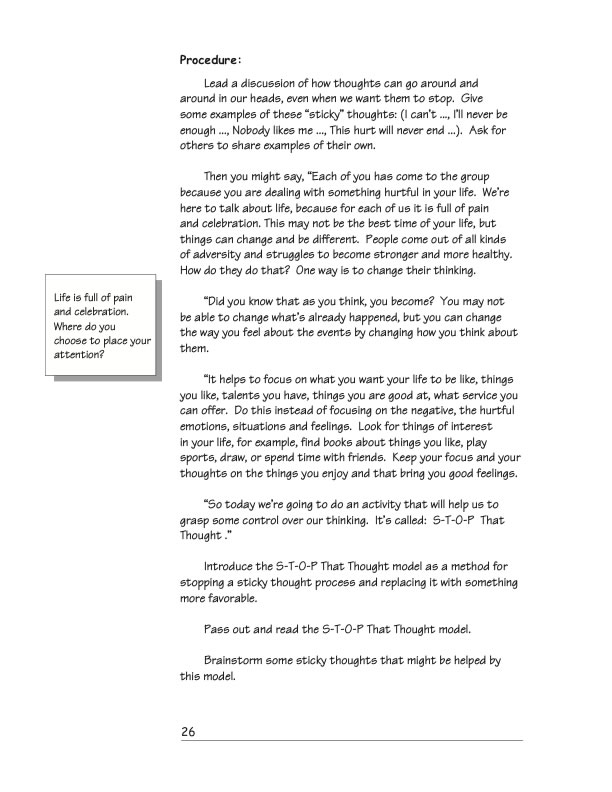
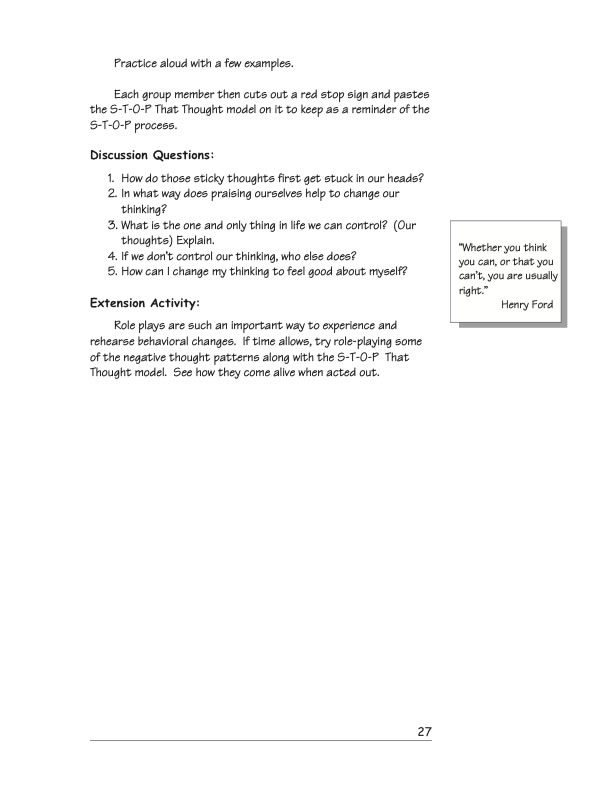
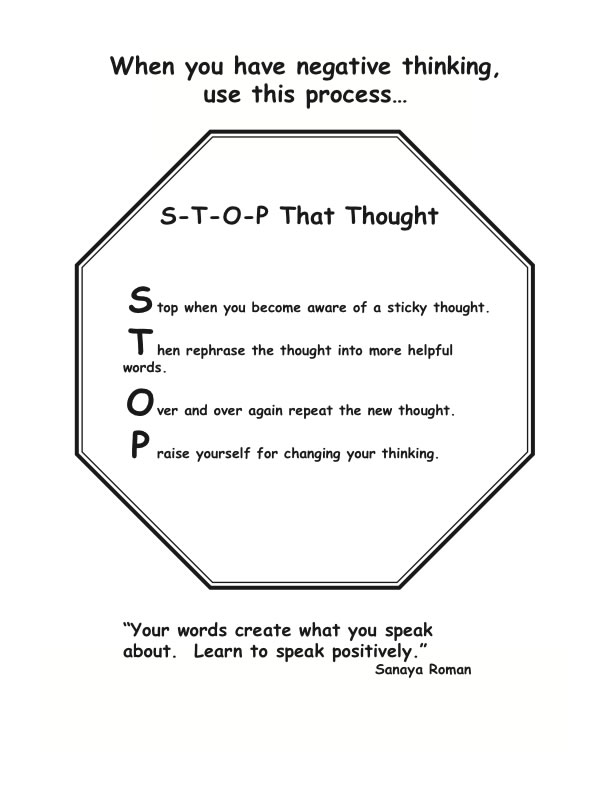
You can check the book out HERE.
Just click HERE to open a fully reproducible PDF of this activity and experience sheet…
If you like our blog resources and would like to receive them regularly, please subscribe here or on our website at www.InnerchoicePublishing.com
If you are already a subscriber, I hope you find this activity valuable. Help us grow our blog by sharing these activities and encouraging others to join. Thank you.
Thanks so much for reading!
Susanna
Awareness of Self and Others
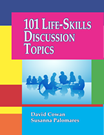
Awareness is a critical element in life-skill development. Aware people do not hide things from themselves. They are in touch with the inner world of their feelings and thoughts, and they are in control of their actions—and they understand that other people feel, think, and behave too. They are also in touch with the reality of the past, the possibilities of the future, and the certainty of the present. Awareness allows individuals to order their lives flexibly and effectively on a moment-to-moment basis. Awareness also allows us to connect with others and is fundamental to developing empathy.
Here’s a Sharing Circle That Focuses on the Nature of Awareness
This Sharing Circle topic comes from the activity book (Grades 4-12), 101 Life-Skills Discussion Topics. The topic is, A Favorite Place of Mine.
 Here’s Your Monday Morning Sharing Circle. Enjoy!
Here’s Your Monday Morning Sharing Circle. Enjoy!
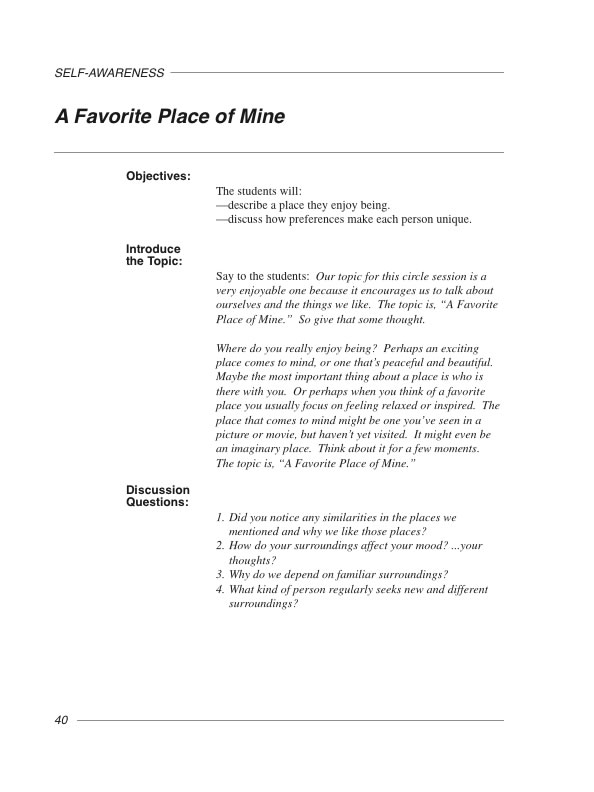
Do you want more information? • Leading a Sharing Circle • Sharing Circle Rules • Books and Resources • Free Activities • Subscribe
Here’s How It’s Done
Gather everyone into a circle. Explain the rules for sharing, and get agreement from everyone that they will follow the rules.
Sharing Circle Rules:
- Everyone gets a turn to share, including the leader.
- You can skip your turn if you wish.
- Listen to the person who is sharing.
- There are no interruptions, probing, put-downs, or gossip.
- Share the time equally.
After everyone has shared, who wants to share, ask the discussion questions. Get more in-depth information here.
Just click HERE to open a fully reproducible PDF of this Sharing Circle activity…
If you like our blog resources and would like to receive them regularly, please subscribe above or on our website at www.InnerchoicePublishing.com
If you are already a subscriber, I hope you find this activity valuable. Help us grow our blog by sharing these activities and encouraging others to join.
Thank you. Thanks so much for reading!
Susanna
Teaching Kindness
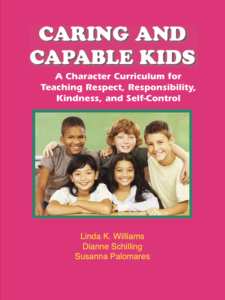
Today’s blog was inspired when I was sharing a meal the other day with a teacher friend. I asked how the new school year was starting out, and she shared that a challenge was getting the students to be kind to one another. I thought that providing a kindness activity today seemed the perfect response.
Kindness and Its Importance
Everyone intuitively knows the value of being kind, and teaching kindness and empathy to children. Observing or participating in acts of kindness sets a positive and caring tone for the day as well as reinforces important social-emotional skills. Modeling and reinforcing kindness makes it a practical and commonplace skill.
Many benefits have been reported in support of directly teaching kindness in schools including: Happy caring children; Greater sense of belonging and improved self-esteem; Improved health and less stress; increased feelings of gratitude; Better concentration; Reduced depression; Less bullying. In a 2016 report the US Department of Education said that research demonstrates the importance of kindness: “Students learn best when they feel safe, supported, challenged and accepted”. These are all elements of kindess.
Here’s Your Kindness Resource
This week’s activity helps students learn about the richness found in kind acts and behaviors and how they can be a benefit to all aspects of their lives. The activity, A Book of Kindness, comes from the resource guide, Caring and Capable Kids.
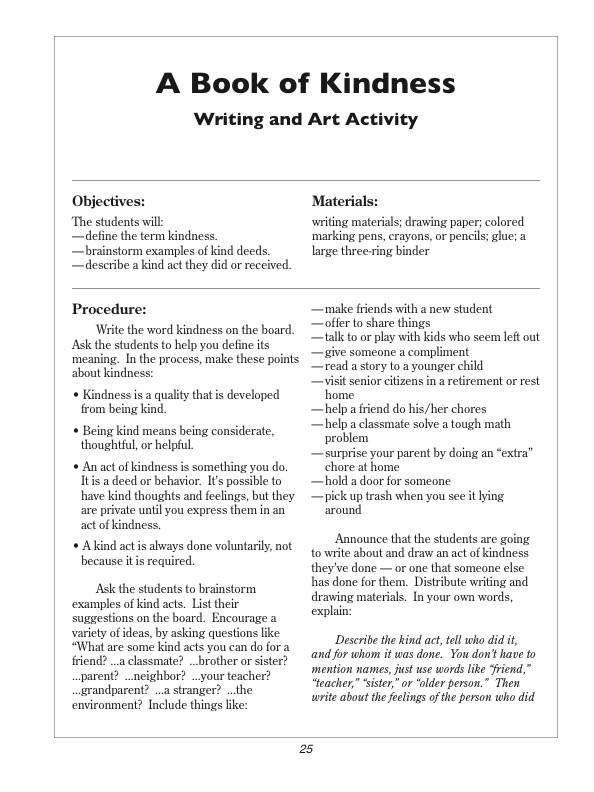
You can check the book out HERE.
Just click HERE to open a fully reproducible PDF of this activity and experience sheet…
If you like our blog resources and would like to receive them regularly, please subscribe here or on our website at www.InnerchoicePublishing.com
If you are already a subscriber, I hope you find this activity valuable. Help us grow our blog by sharing these activities and encouraging others to join. Thank you.
Thanks so much for reading!
Susanna
How I Show Respect Toward Others
Reflections on Respect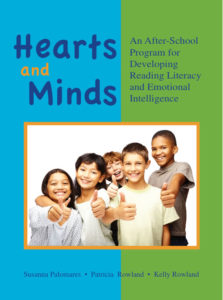 Here’s a follow up on last week’s Blog which discussed the importance of teaching students the value of respect. Helping students understand the significance of a respectful attitude and helping them identify specific actions and behaviors that demonstrate respect is the purpose of today’s Sharing Circle. This Sharing Circle topic comes from the activity book (Grades 3-6), Hearts and Minds – An After-School Program for Developing Reading Literacy and Emotional Intelligence. The topic is, How I Show Respect Toward Others…
Here’s a follow up on last week’s Blog which discussed the importance of teaching students the value of respect. Helping students understand the significance of a respectful attitude and helping them identify specific actions and behaviors that demonstrate respect is the purpose of today’s Sharing Circle. This Sharing Circle topic comes from the activity book (Grades 3-6), Hearts and Minds – An After-School Program for Developing Reading Literacy and Emotional Intelligence. The topic is, How I Show Respect Toward Others…
 Here’s Your Monday Morning Sharing Circle. Enjoy!
Here’s Your Monday Morning Sharing Circle. Enjoy!
Do you want more information? • Leading a Sharing Circle • Sharing Circle Rules • Books and Resources • Free Activities • Subscribe
Here’s How It’s Done
Gather everyone into a circle. Explain the rules for sharing, and get agreement from everyone that they will follow the rules.
Sharing Circle Rules:
- Everyone gets a turn to share, including the leader.
- You can skip your turn if you wish.
- Listen to the person who is sharing.
- There are no interruptions, probing, put-downs, or gossip.
- Share the time equally.
After everyone has shared, who wants to share, ask the discussion questions. Get more in-depth information here.
Just click HERE to open a fully reproducible PDF of this Sharing Circle activity…
If you like our blog resources and would like to receive them regularly, please subscribe above or on our website at www.InnerchoicePublishing.com
If you are already a subscriber, I hope you find this activity valuable. Help us grow our blog by sharing these activities and encouraging others to join.
Thank you. Thanks so much for reading!
Susanna
Activities for Teaching Respect
Teaching children about respect and developing positive relationships is one of the most important things we can do, especially in today’s increasingly disrespectful world.
What It Takes

Being intentional and specifically having your students engage in activities focussed on respect will help them to understand the importance of their respectful actions and to understanding the difference between respectful and disrespectful actions and words.
Respect means showing regard for the worth of someone or something. It includes respect for self (self-esteem), respect for others, and respect for the environment, including other life forms. All other varieties of respect are outgrowths of these three. Respecting someone’s property, for example, extends from respecting the owner of the property.
When we teach students to show respect, we prevent them from hurting what they ought to value. If we are completely successful, they will end up valuing that for which they have demonstrated respect.
Other ways to foster respect include:
- Create a democratic classroom environment, in which the rights of all students are respected. Show your own regard for every student, every day.
- Expect students to be polite and courteous. Consistently model the use of “please,” “thank you,” “excuse me,” etc.
- Really listen to the opinions and contributions of students. Make it a rule that students listen respectfully to each other.
- Show your appreciation for diversity. Create an environment in which individual differences are celebrated, and where all students feel included and interdependent.
- Teach students a simple decision-making process and encourage them to use it. Respect their ability to make decisions for themselves. Serve as their advisor and consultant.
- When students have difficulty understanding how their behavior affects others, suggest that they apply the classic test of reversibility. Ask them: Would you want to receive this kind of treatment?
Here’s a great activity for working on one important aspect of RESPECT:
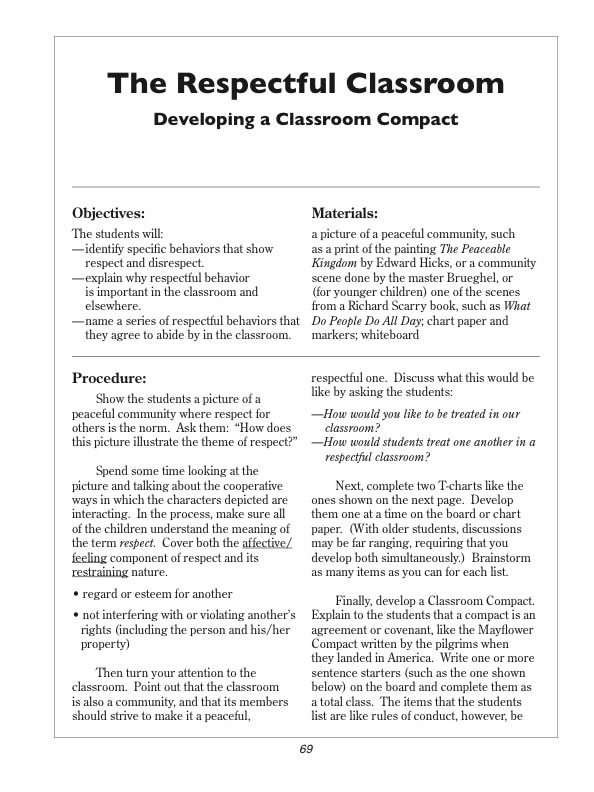
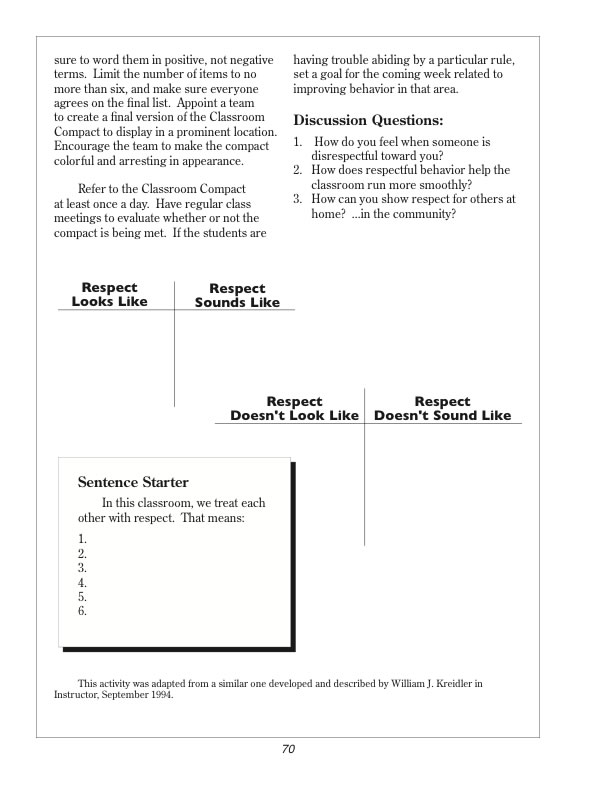
You can check the book out HERE.
If you like our blog resources and would like to receive them regularly, please subscribe here or on our website at www.InnerchoicePublishing.com
If you are already a subscriber, I hope you find this activity valuable. Help us grow our blog by sharing these activities and encouraging others to join. Thank you.
Thanks so much for reading!
Susanna
Back to School Ideas for Getting to Know Your Students
Getting a Good Start
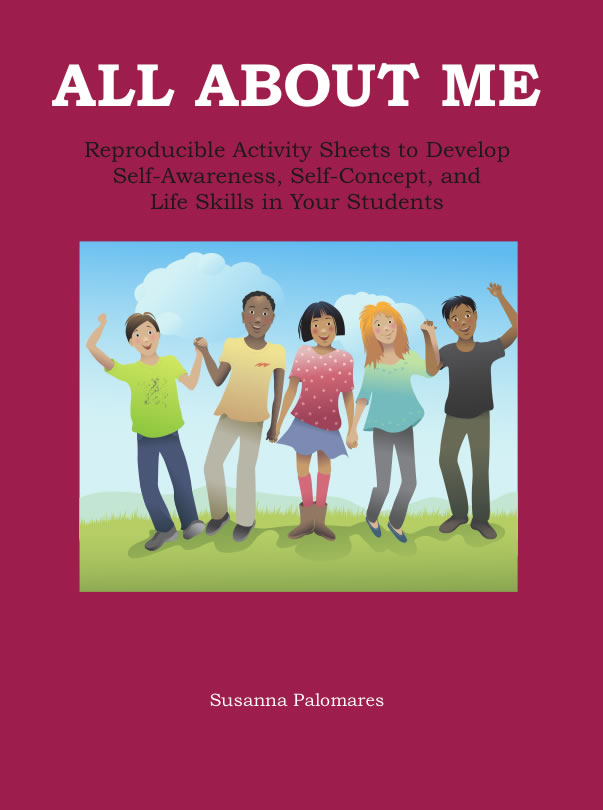
It’s your first day of school and you have a whole new group of students to get to know. By being interested in who they are as people, their interests, feelings, experiences, backgrounds etc., you’re making them feel welcome and setting a tone of caring, and by making them feel welcome and showing that you care you’re building positive relationships and winning them over right from the start. When you get to know your students on a personal level you’ll have a better understanding of group interactions, personal likes and dislikes, and motivating interests. This can help you plan lessons, organize groups, and diffuse potential problems.
Some Great Resources
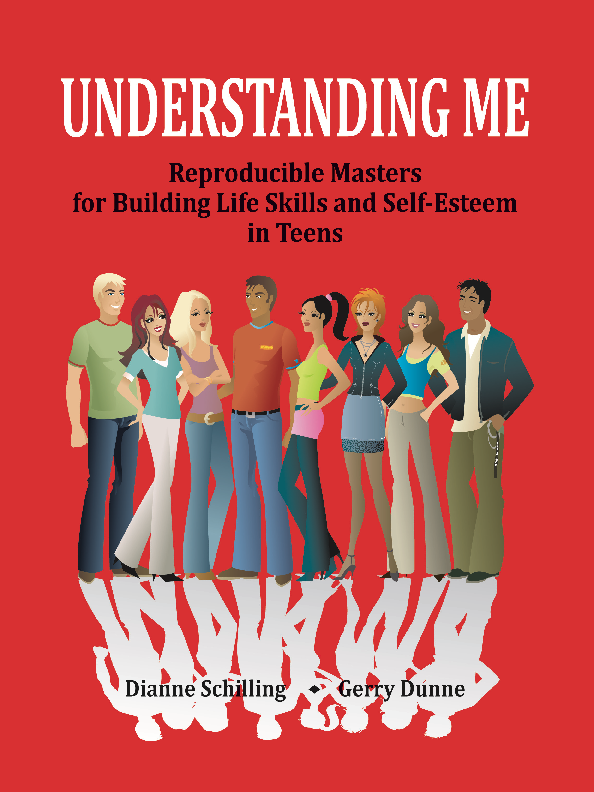
Here are a few quick activity sheets and some suggestions for follow up group interactions that help you to get to know your students and for them to get to know each other.
One Last Thought…
It’s important to remember that building positive relationships and maintaining a classroom of caring is about taking time on a regular basis to be in touch with the human side of your students. Check out more activities from the many books available from the Innerchoice Publishing website
Activities for the elementary grades – All About Me
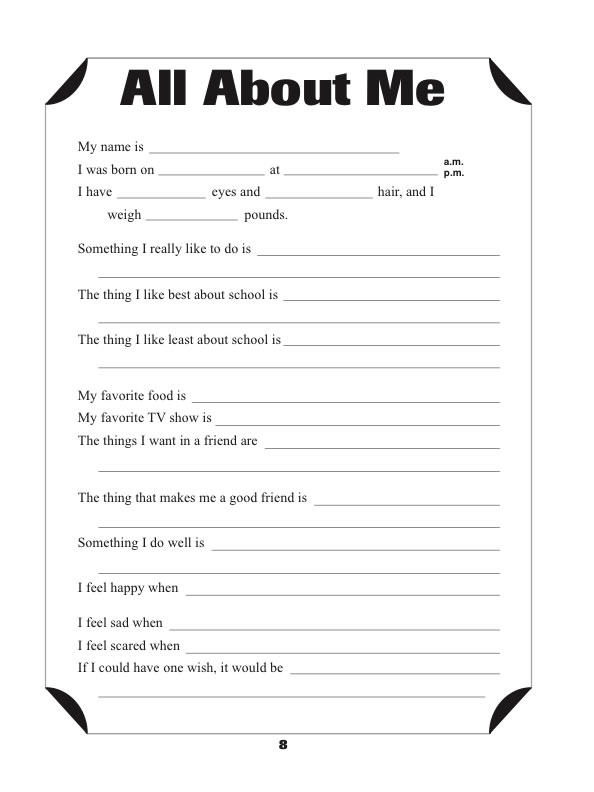
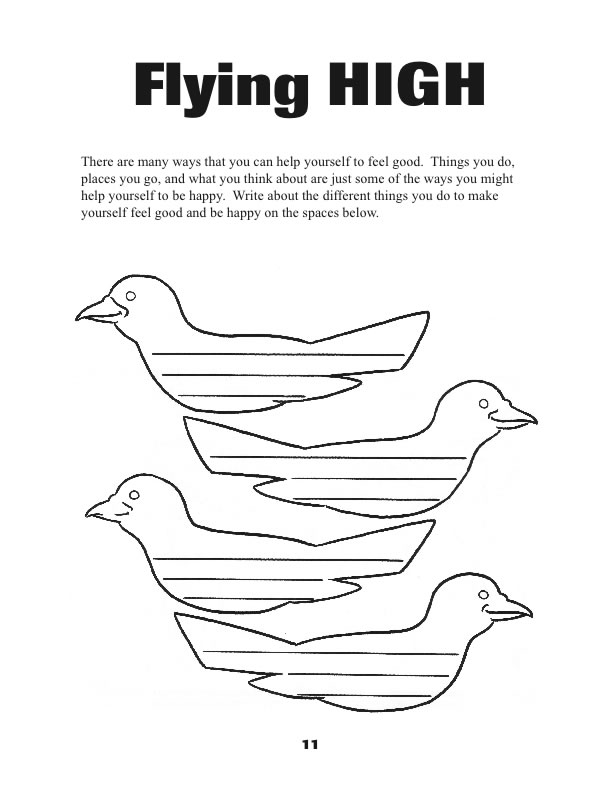
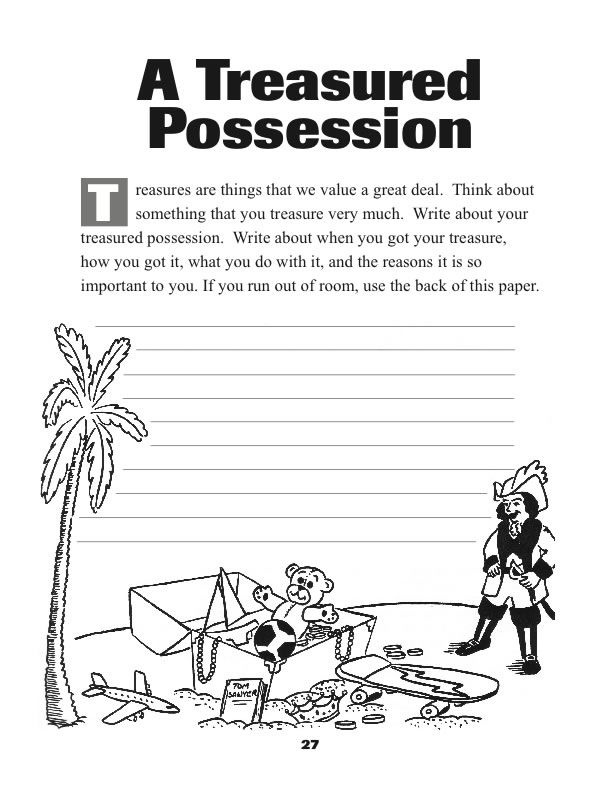
Activities for the secondary grades – Understanding Me
